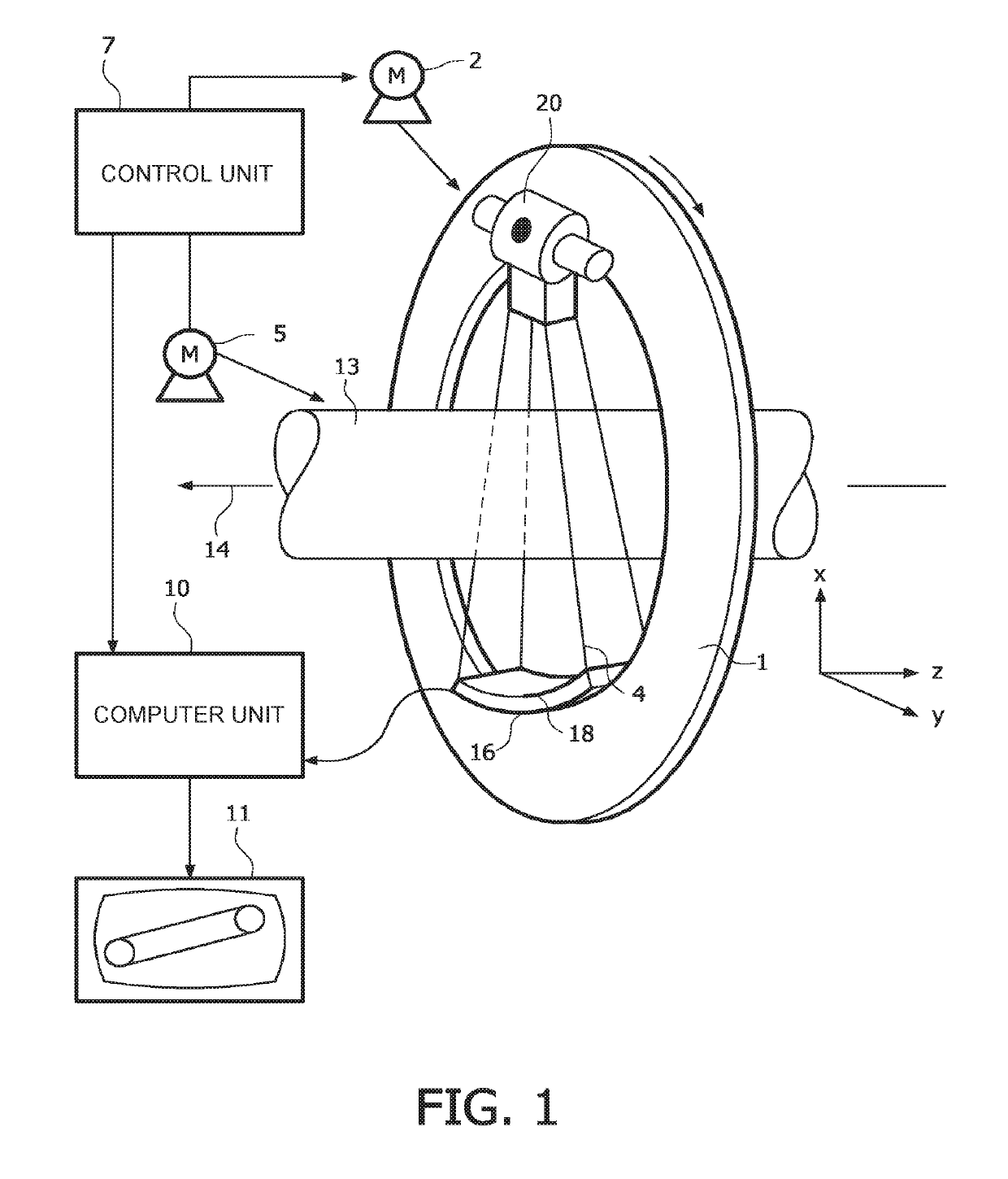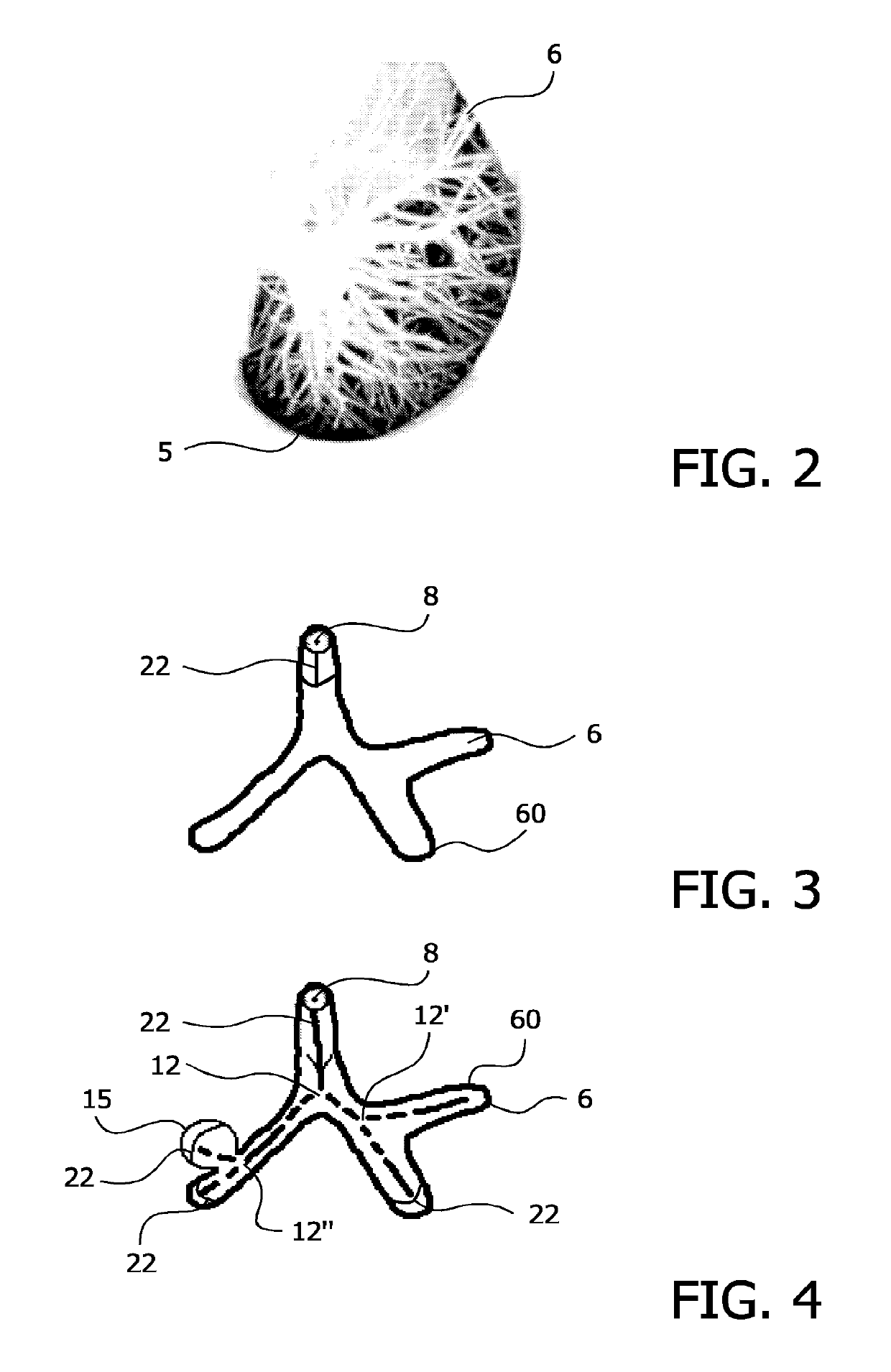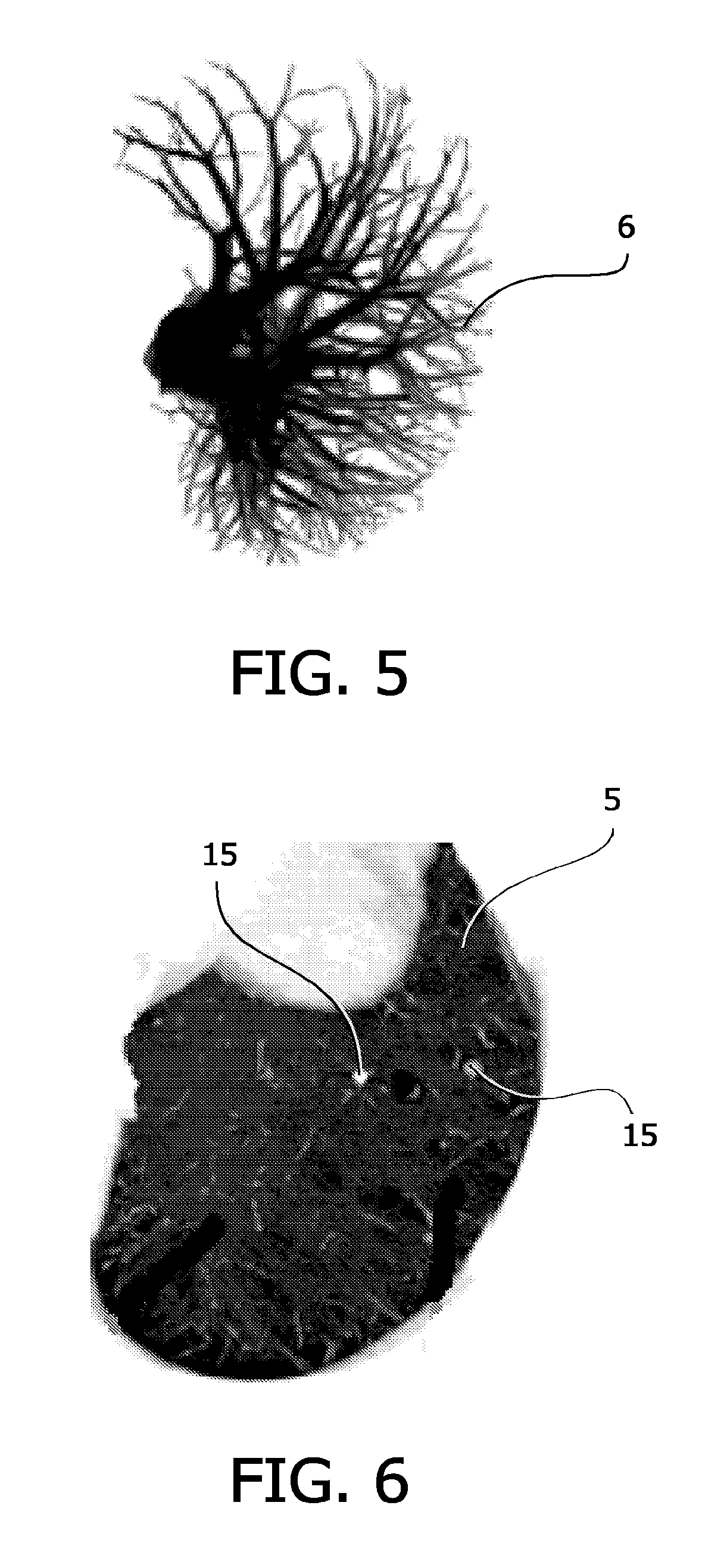Identifying abnormal tissue in images of computed tomography
a computed tomography and abnormal tissue technology, applied in image enhancement, instruments, applications, etc., can solve the problem of low contrast between abnormal tissue and blood vessels containing contrast medium, and achieve the effect of simplifying the subsequent analysis
- Summary
- Abstract
- Description
- Claims
- Application Information
AI Technical Summary
Benefits of technology
Problems solved by technology
Method used
Image
Examples
Embodiment Construction
[0021]FIG. 1 shows a schematic view of a support or a gantry 1, which is able to rotate along the circular path marked by the curved arrow parallel to the y-plane of the coordinate system illustrated. For that purpose, the gantry 1 is driven by a motor 2 at a preferably constant but adjustable angular velocity. A radiation source 20, for example an X-ray tube, is fixed to the gantry 1, and includes a collimator arrangement, which extracts a fan-shaped beam bundle 4 from the radiation produced by the radiation source 20. The beam bundle 4 is illustrated schematically by means of two lines, which bound the beam bundle 4. The fan-shaped beam bundle 4 penetrates at least partially through an object 13, which in FIG. 1 is shown as a portion of a cylinder; the object 13 is usually a patient or part of a patient on a patient support table and in this case the object comprises a lung or portions thereof, the lung cavity 5, which comprises the lung, pulmonary tissue and blood vessels 6, whic...
PUM
 Login to View More
Login to View More Abstract
Description
Claims
Application Information
 Login to View More
Login to View More - R&D
- Intellectual Property
- Life Sciences
- Materials
- Tech Scout
- Unparalleled Data Quality
- Higher Quality Content
- 60% Fewer Hallucinations
Browse by: Latest US Patents, China's latest patents, Technical Efficacy Thesaurus, Application Domain, Technology Topic, Popular Technical Reports.
© 2025 PatSnap. All rights reserved.Legal|Privacy policy|Modern Slavery Act Transparency Statement|Sitemap|About US| Contact US: help@patsnap.com



